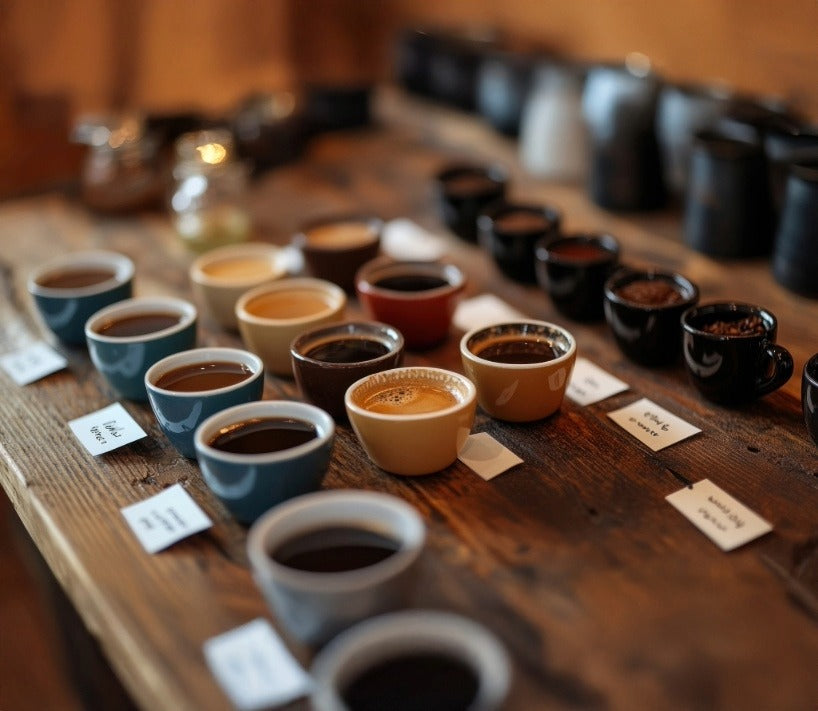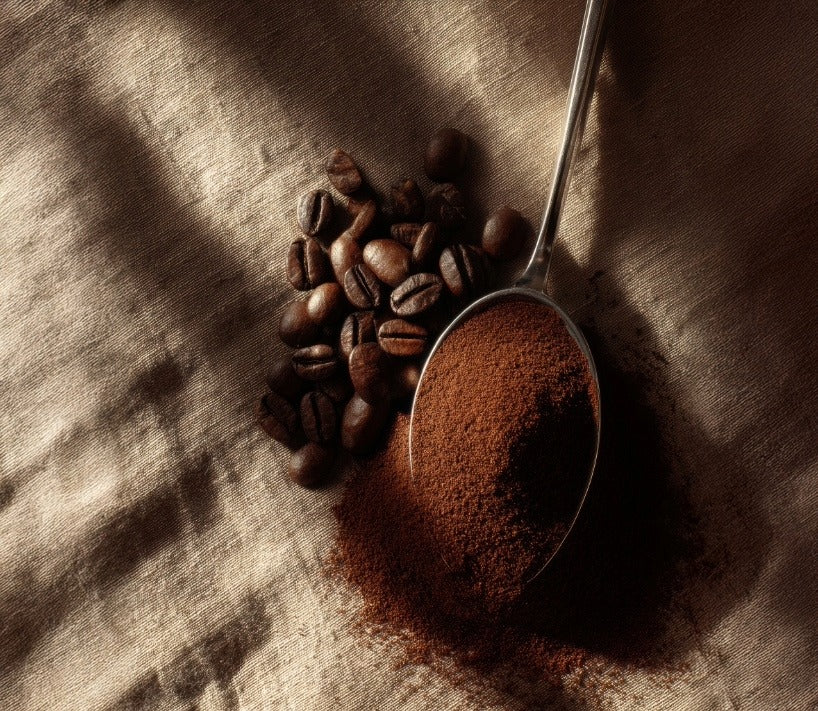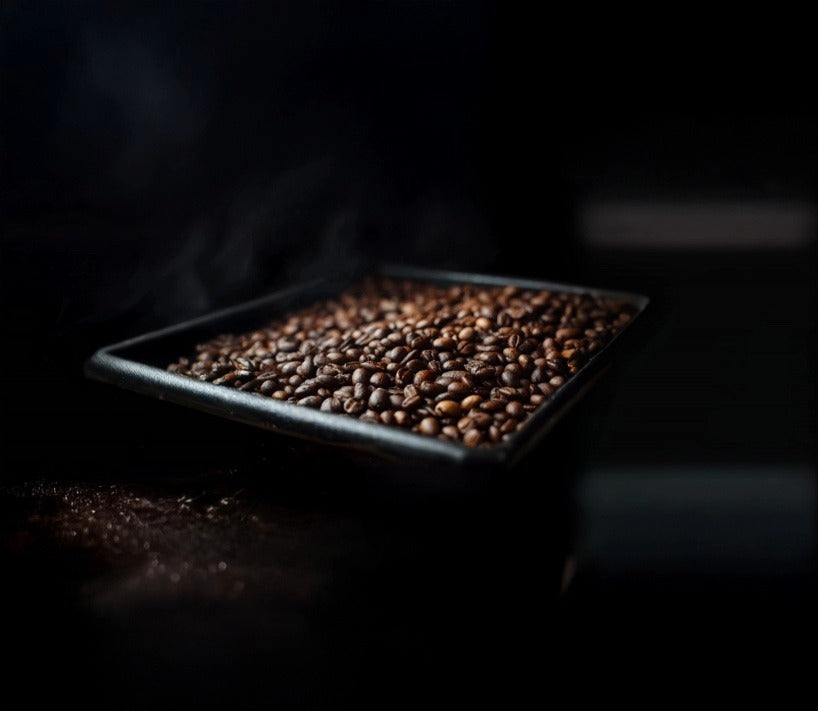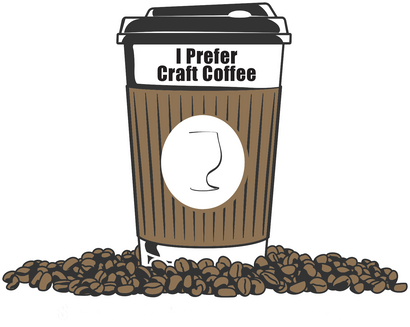From Café‑Phobic to Countertop Connoisseur: Why We Dodge Home Brewing—And How to Fix It
April 20, 2025 5 min read
From Café‑Phobic to Countertop Connoisseur: Why We Dodge Home Brewing—And How to Fix It
"I’m Not a Barista, I Just Play One on Weekends”
Confession time: I once believed brewing coffee at home required a PhD in Steam & Espresso Extraction with a minor in Latte Art Geometry. I’d queue up at my local café, watch the barista perform what looked like caffeinated wizardry, and think, Nope, can’t do that. Sound familiar?
Yet here you are, curious about ditching the daily line‑up (and maybe the daily $6 latte). You’ve googled “best craft coffee at home,” browsed endless gear reviews, and even whispered, “Where can I buy fresh coffee beans near me?” But a tiny voice still mutters, Isn’t this too much hassle?
Spoiler: it isn’t. In fact, once you learn why so many of us avoid home brewing—and how ridiculously simple the fixes are—you’ll wonder why you waited. Buckle in for a 1,500‑word romp through fears, myths, and the glorious payoffs of DIY coffee.
Facing the Latte‑Sized Roadblocks
Below, I’ll break down the seven biggest reasons people sidestep home brewing and show you how each barrier is more paper tiger than iron gate.
1. “I Don’t Have Time—Mornings Are Chaos!”
Look, no one’s asking you to grind your own beans while reciting Italian poetry. A basic pour‑over takes four minutes (fewer if you count scrolling TikTok as “steeping”). Batch brew a full pot before your shower and refill all morning. Bonus: that heavenly aroma becomes your unofficial alarm clock.
2. Equipment Paralysis (“Which Gizmo Does What, Again?”)
Scrolling “best espresso beans” on the internet can feel like falling into a gear abyss: burr grinders, gooseneck kettles, scales that weigh to the nearest cat hair. Truth: you only need three essentials to crush it at home:
-
Fresh whole beans—preferably roasted within two weeks.
-
A grinder—start cheap; upgrade later.
-
A brewing method—French press, AeroPress, or pour‑over.
High‑end toys are fun, but they’re sprinkles, not cake. Plenty of folks brew café‑level cups with a $20 plastic dripper.
3. “But Café Coffee Tastes Better!”
Ever ordered a killer cappuccino Monday morning and a meh one from the same café Tuesday? Quality wobbles when baristas rotate. At home you control every variable—water temp, brew time, bean freshness—so your average cup actually improves over time. That’s how you graduate from average joe to the best tasting whole bean coffee experience without leaving the house.
4. Shelf‑Life Skepticism
Grocery‑store coffee can sit for months (sometimes years—gulp) before you buy it. Beans degas, flavor dives. No wonder people assume home brewing tastes “flat.” Order directly from roasters who ship within 24 hours of roasting (search phrases like best coffee online, top coffee delivered, or best small batch coffee). Freshness = flavor fireworks.
5. Fear of Bad Brews (“What If I Ruin $18 Beans?”)
You will botch a cup or two. Relax—it’s the caffeine equivalent of riding a bike. Measure coffee by weight, aim for a 1:16 ratio (1 g coffee to 16 g water), and use water around 200 °F. Consistency beats wizardry every time. Your palate will sharpen, and soon you’ll eyeball measurements like a pro.
6. Social Rituals and Coffee‑Shop Vibes
Sometimes you crave the café bustle, not just the coffee. Good news: brewing at home doesn’t ban you from meeting friends at that funky latte spot. It simply means you’re free from paying rent to their espresso machine every single morning. Treat cafés like dessert—special but not daily necessity.
7. “I Don’t Know Where to Start!”
Analysis paralysis is real when endless blogs scream, “Buy this grinder!” or “Only use water with 37 ppm magnesium!” Step back. Pick one beginner‑friendly brew method (French press is foolproof), one bag of freshly roasted beans, and commit to two weeks. Your taste buds will guide the next step, not some random internet guru (present company excluded).
Mini Myth‑Busting Interlude
-
Myth: Darker roast = more caffeine.
Fact: Light roasts often retain slightly more caffeine. Drink what tastes best. -
Myth: Espresso beans are a special species.
Fact: “Espresso” is just a roast/profile; any high‑quality bean can be dialed in for espresso. -
Myth: You must spend $500 on gear.
Fact: Many award‑winning home brewers started with a $30 setup.
The Bean‑efits of Brewing at Home
Now that we’ve karate‑chopped those fears, let’s spotlight why brewing at home is downright life‑changing:
1. Flavor Tailored to You
Prefer juicy, fruit‑forward Ethiopians? Crave chocolate‑heavy Latin American coffees? You control the roast level, grind size, and brew strength. Home brewing turns every cup into a customized flavor experiment—you’re effectively your own R&D lab.
2. Wallet Wins
Spending $5‑$7 daily adds up to $150‑$210 a month—before tip! High‑quality beans average $18‑$22 per 12‑oz bag, yielding ~20 cups. That’s roughly $1 per cup for café‑level coffee. More savings = more…well, probably more coffee gadgets.
3. Better for the Planet
Fewer single‑use cups, less commuting, and compostable grounds that nourish your plants. Even the snobbiest burr grinder can’t deny that eco‑halo.
4. Built‑In Morning Ritual
Brewing forces you to slow down and engage your senses—grinding aroma, bloom bubbles, first sip ahhh. It’s mindfulness without sitting cross‑legged (though you absolutely can, coffee in hand).
5. Instant Super‑Host Status
Invite friends over, hand them the best specialty coffee online—brewed by you—and watch jaws drop. Suddenly your kitchen is the coolest café in town, complete with the comfiest seats.
6. Gift‑Giving Glory
Instead of the usual scented candle, give pals a home‑roasted sample or a grinder starter kit. Presents for coffee lovers don’t get fresher than that. (Just remember to slap a roast date on it—pro tip.)
7. Health & Control
Skip sneaky sugar syrups and mystery milk. Want it black? Add a dash of cinnamon? Oat milk micro‑foam? Home brewing puts you in the driver’s seat, not the barista who swears the caramel pump is “light.”
Quick‑Start Blueprint (Because You Came for Action, Not Just Jokes)
-
Buy Fresh Beans
Look for a roast date within the past 10‑14 days. That’s true whether you search best craft coffee online or wander into a local roastery. -
Invest in a Burr Grinder
Consistent grind size = consistent extraction. Blade grinders chop unevenly; burrs slice evenly. Prices start around $40. -
Pick a Brew Method
-
French Press: Rich body, forgiving.
-
Pour‑Over (e.g., V60): Clean cup, highlights delicate notes.
-
AeroPress: Portable, quick cleanup, versatile enough for “espresso‑style.”
-
-
Dial Your Ratio
Standard 1:16 (e.g., 25 g coffee → 400 g water). Adjust to taste. -
Use Filtered Water
Minerals matter. If your tap tastes funky, so will your brew. -
Time It
-
French press: 4 minutes.
-
Pour‑over: 2‑3 minutes pour, 30‑sec bloom.
-
AeroPress: 1‑2 minutes total.
-
-
Taste, Tweak, Repeat
Bitter? Grind coarser. Sour? Grind finer. Flat? Increase dose slightly.
Frequently Sipped Questions
-
Q: I love lattes. Can I still make café‑quality milk drinks at home?
A: Absolutely. Start with strong coffee or a moka‑pot “espresso,” heat milk on the stove, and whisk for foam. Upgrade to a mid‑range espresso machine when you’re hooked. -
Q: Best coffee for non‑coffee drinkers?
A: Try naturally processed Ethiopians—sweet, fruity, low bitterness. They might convert even the staunchest tea loyalist. -
Q: Coffee beans as a gift—whole or ground?
A: Whole. Keeps fresh longer and shows you respect their taste buds.
Final Sips
The biggest barrier to home brewing isn’t gear, time, or even skill—it’s the mental hurdle. Once you realize the best coffee to buy online or locally roasted beans can taste better in your kitchen than in many cafés, returning to disposable cups feels like rewinding progress.
So, the next time you’re tempted to search “line length at my local coffee shop,” remember: the distance from your bed to the kettle is shorter—and way cheaper—than any morning commute. Give brewing a two‑week trial. Your wallet will clap, your taste buds will dance, and you’ll unlock a hobby that rewards you every single day.
Now, go forth and brew boldly. Your future, well‑caffeinated self will thank you.
Also in Best Coffee To Buy Online Education

What Makes Specialty Coffee Taste Better: The Real Reason
December 19, 2025 4 min read
I’ve also roasted thousands of pounds of air roasted coffee beans, shipped fresh roasted coffee beans online, and helped tons of people upgrade from “meh” to “HOLY FLAVOR” with tiny changes.

How To Choose Specialty Coffee Beans the Easy Way
December 18, 2025 4 min read
Fresh roasted coffee beans online should tell you when the beans were roasted… not when the bag expires in 2028.

Best Gift For Coffee Lovers: Why Beans Beat Gadgets
December 17, 2025 4 min read
Here’s the truth: the best tasting craft coffee at home doesn’t come from gear.
It comes from fresh, high-scoring specialty coffee roasted by someone who cares more about your morning cup than their own.
